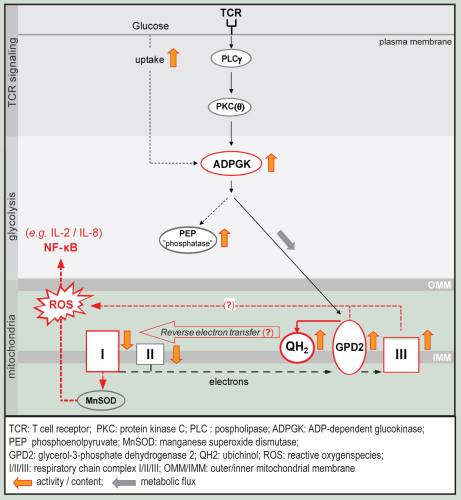Current Research
Metabolism provides the cell with energy and building blocks – but it also steers the cellular fate, i.e. survival, proliferation, differentiation, or death. The underlying mechanism can be as simple as producing energy in form of ATP, but may involve substrate/metabolite-dependent protein modification (i.e. glycosylation) as well as regulation of transcription and translation. We study this metabolic signaling in inborn and acquired disorders of metabolism using in vitro and in vivo models (mice and zebrafish).
Inborn errors of metabolism
Inborn, metabolic disorders can affect every enzyme and transporter of the cell. We focus on defects in three metabolic pathways. Glutaric aciduria type I is an autosomal-recessive defect in lysine metabolism leading to accumulation of neurotoxic metabolites and, thereby, to acute bilateral striatal lesions and chronic neurological disease. We study the mechanism of chronic changes including DNA repair and epigenetic stress and are working on treatment strategies.
BH4 is a critical co-factor in the biosynthesis of dopamine and serotonin. Patients with defects in this pathway accordingly display dystonia which can be treated by e.g. L-dopa. Deficiency of quinoid dihydropteridine reductase (BH4 recycling), however, is poorly treatable and and results in neuroanatomical changes. We are currently investigating a new line of evidence linking the deficient protein to RNA metabolism.
Disorders of urea cycle lead to massive accumulation of ammonia. If untreated, this induces life-threatening crises and severe neurological disease. Patients with Citrullinemia Type 1 display chronic disease progression despite early treatment and low ammonia levels. Again, current findings suggest that a yet not complete understood role of the deficient protein in RNA metabolism contributes to the pathomechanism.
Acquired errors of metabolism
Cancer cells are characterized by a very unique metabolic adaption. This so-called Warburg effect describes the observation that despite normoxia cancer cells mainly rely on anaerobic metabolic pathways (i.e. glycolysis and glutaminolysis) rather mitochondrial respiration. This adaption is thought to facilitate fast and efficient generation of building blocks for proliferation. We focus on glucose 6-phosphate handling of endoplasmic reticulum and how it steers cellular signaling (i.e. NF-kappaB) in different cancer cell types (including glioma and leukemia).


